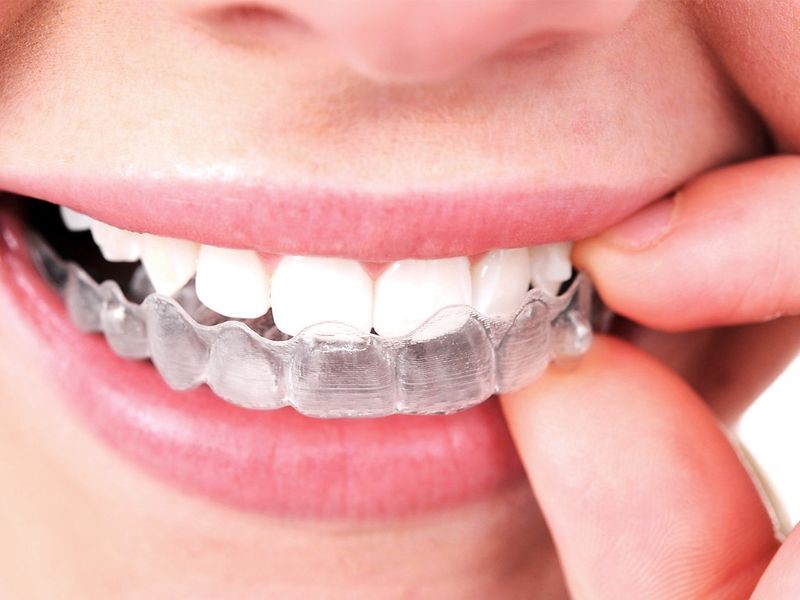While starting orthodontic treatment usually it have many doubts & confusion and ask many questions when they consult an orthodontic specialist or a dentist. The most common question is often about the type of appliance to use to correct your orthodontic problem: braces or clear aligners? How to decide?
First of all, keep in mind that there is no single “right way” to perform orthodontic treatment. An accurate diagnosis is the starting point, and that’s something orthodontists are especially well-trained in. After obtaining the orthodontic records (X-rays, photos, and models), the orthodontist establishes a list of problems and prepares a treatment plan. Why do we get crooked teeth, have a look on this article to understand all the causes of it.
One device is not inherently better than another. What is used for an individual’s correction will be based on the treatment goals and lifestyle needs of the patient. However, some rules apply to all patients, regardless of the type of device. For example, all patients should brush and floss daily and should wear retainers after treatment.
Below, we’ll look at some common treatment factors to consider for both braces and clear aligners.
The Brackets
Braces have been the traditional form of treatment used by orthodontists for decades, but today’s brackets have come in a wide variety of models: stainless steel, tooth-colored ceramic, and even gold.
Visibility
While there are more discreet options (tooth-colored brackets, brackets that go behind the teeth), other elements remain visible (gold-colored rubber bands, wires, or brackets). However, you can choose the colors of the rubber bands.
Mobility
The brackets remain attached to the teeth during the course of treatment. As a plus point, you can’t lose them, unless you eat hard and sticky food.
Comfort
There is initial discomfort when the brackets are placed or adjusted, and the brackets, along with the wires, can temporarily irritate the oral tissue. In general, the discomfort is short-lived and easily tolerated. Once patients get used to braces, they may even forget they are wearing them.
Hygiene
Patients undergoing this treatment must keep their teeth, gums, and braces free of plaque and food debris so that bacteria cannot attack tooth enamel or cause gum inflammation. Food debris and plaque should be removed with frequent brushing and daily flossing .
Hygiene with fixed braces is much more difficult than without braces, so brushing time and effort must be tripled.
Diet
People with braces should avoid hard, sticky, and crunchy foods. Likewise, they should opt for water instead of carbonated drinks, flavored waters or sports drinks; these can contain acids and sugars, both of which are bad for tooth enamel.
Clear aligners
These transparent caps put gentle pressure on the teeth and reposition them. Aligners are one of many technological advances that have made orthodontic treatment less visible and one of the main systems orthodontists use to move teeth.
Visibility
Aligners fare clear, thin, plastic sleeves that make them virtually invisible and allow a person to have a perfect smile. Clear aligners are placed on your teeth to help guide them into place. Aligners are designed to minimize the appearance of the brace and better fit any lifestyle.
Mobility
Many patients appreciate that the aligners are removable. They may be removed for eating, brushing and flossing, or for short periods at work or social events. The key is to use them as prescribed. That generally means wearing them a minimum of 22 hours a day and in the correct sequence.
Because they are removable, aligners can get lost. They fall out of pockets and can even be wrapped in a napkin and carelessly thrown away. To avoid these inconveniences, there are some specially designed covers to store them during the periods in which they are not worn.
Comfort
While there may be some initial discomfort when a patient switches to a new set of aligners, the discomfort can be easily overcome. The aligners cannot work unless they are in the mouth.
Hygiene
It is essential to avoid the consumption of soft drinks, flavored waters or sports drinks of any kind with the aligners. Liquids seep into aligners and, if they contain acid, sugar, or both, can quickly lead to tooth staining and extensive decay. Teeth must be pristine when aligners are placed in the mouth.
In conclusion, we can say that the type of appliance used in orthodontic treatment is much less important than the knowledge of the person providing the treatment. Rely on the skills of an experienced orthodontist, who has the training and ability to make a diagnosis, and translate it into a treatment plan that will help you or your child achieve a beautiful, healthy smile.



